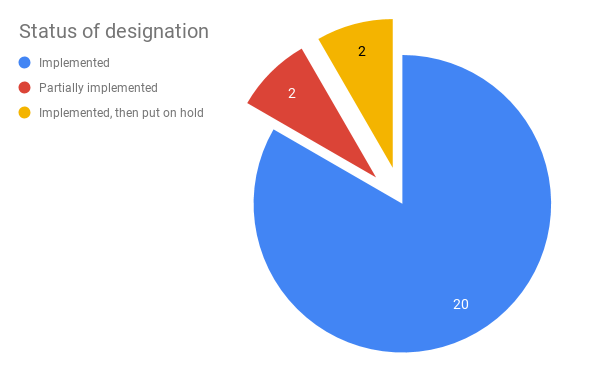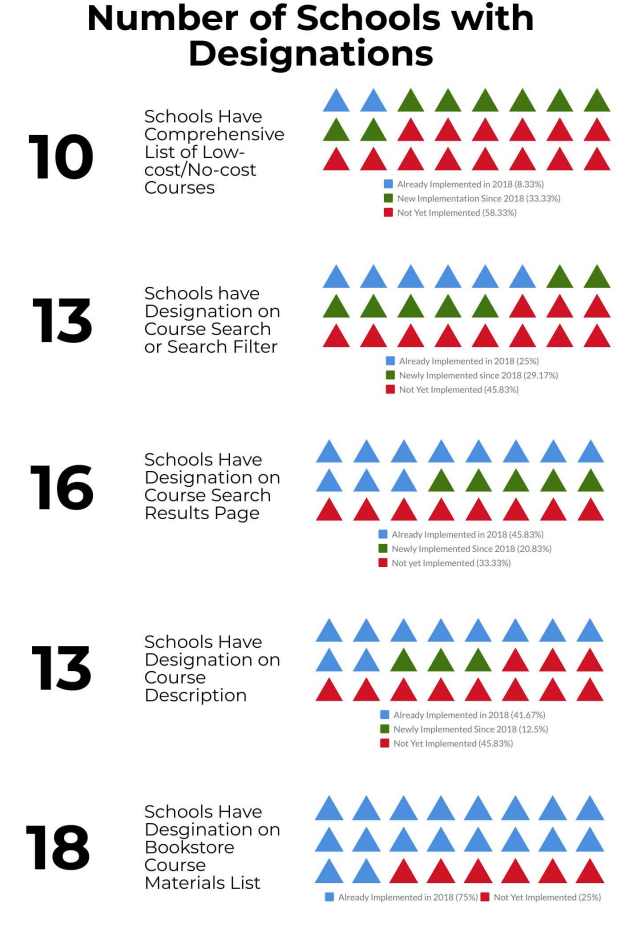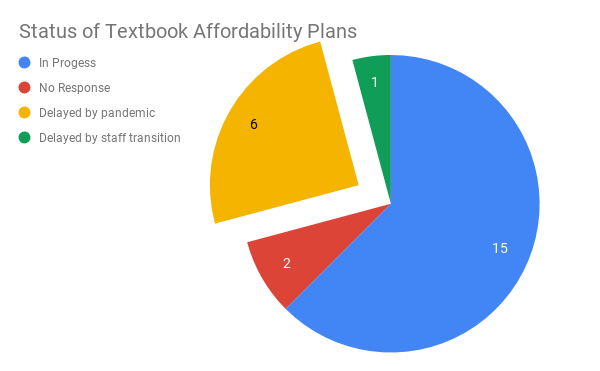Research and graphic support contributed by Stephanie Hubbard, Program Assistant.
HB 2871: No-cost/Low-cost Schedule Designations
HB 2871, passed in 2015, requires Oregon’s public community colleges and universities to add no-cost/low-cost designations to their course schedules. In 2018, Oregon’s Higher Education Coordinating Commission requested a research report evaluating the effectiveness of different implementations statewide. The report was completed in June 2018 by Brooke Freed, Amber Friedman, Sarah Lawlis, and Angie Stapleton as their Master of Public Administration Capstone at the University of Oregon School of Planning, Public Policy and Management.
Oregon can be proud of the effort to implement the schedule designation: all 24 of Oregon’s colleges and universities have begun sharing course materials cost information with students via the schedule.
The 2018 report detailed the different types of implementations found in Oregon’s colleges and universities and recommended that institutions consistently designate no-cost/low-cost courses everywhere that students search for classes and course materials, including at the bookstore. In 2020, progress has been made towards providing cost information in multiple places and modes. A statewide inventory is available via https://tinyurl.com/designation-inventory.
The schedule designation has enormous impact and even more potential. From 2017-2019, 12% of courses statewide were designated no-cost and low-cost in the schedule at 19 colleges and universities; these courses are estimated to represent $34 million in student savings during those two years (more info: Estimated 2017-19 Student Savings in No-Cost/Low-Cost Courses). Further, assuming that students have the flexibility to select courses based on materials cost, designated courses represent a pathway that leads to 75% savings on course materials towards an Associate of Arts Oregon Transfer degree at a community college or General Education requirements at a university (more info: Four years and falling: Impact of statewide funding for textbook affordability and What is the cost of course materials for a four-year degree at each university in Oregon?).
HB 2213: Textbook Affordability Plans
HB 2213, passed in 2019, requires Oregon’s public community colleges and universities to develop textbook affordability plans. The 2018 research report found that even though the cost of textbooks had an impact on academic decisions for over half the students surveyed, few students were aware of their college or university’s efforts to designate no-cost/low-cost courses in the schedule. The textbook affordability plans will respond to this finding by including steps to market the no-cost/low-cost schedule designation so that students can more easily find information about the total cost of attendance. Each institution will also develop measurable goals for increasing textbook affordability, address the impact of decreased campus store revenue as a result of the increased adoption of low-cost or no-cost materials, and make a statement of support for academic freedom.
Progress on the textbook affordability plans after one year is above and beyond, in light of the all-hands-on-deck response to the global pandemic that disrupted Spring 2020. This effort recognizes that students face new hardships caused by the coronavirus, including illness, unemployment, and other ripple effects. This is the right time to make changes that enable students to better manage their budgets.



